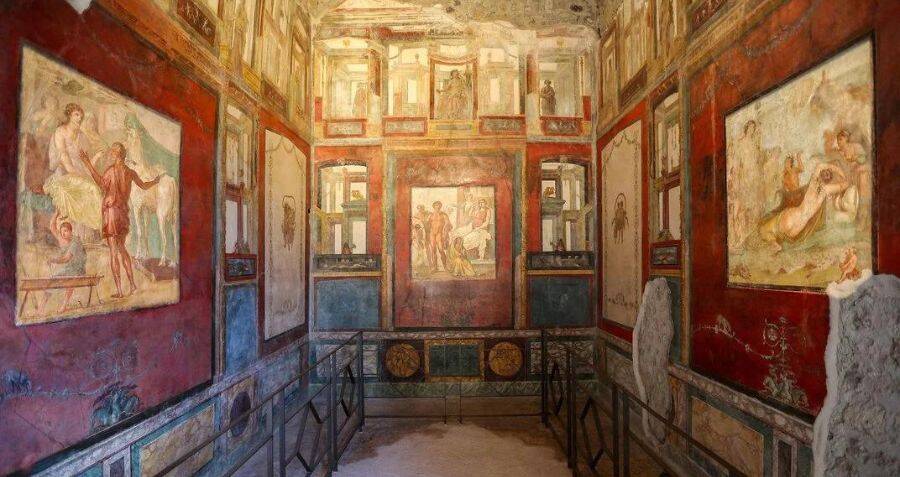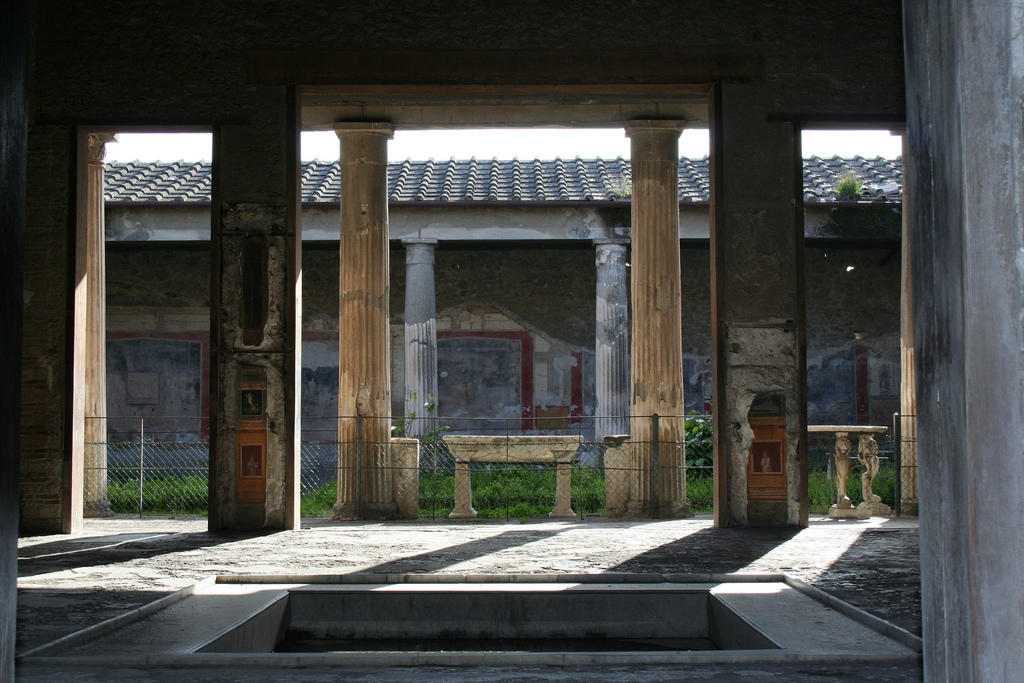Hello future art historians! Let's dive into the fascinating world of the House of the Vettii. This ancient Roman house offers a stunning glimpse into the lives of wealthy merchants in Pompeii. We will explore its architecture, decorations, and the stories they tell. It's like peeking into a time capsule!
What is Pompeii?
Pompeii was an ancient Roman city. Imagine it as a bustling town much like any other today, with shops, homes, and markets. Now, imagine a catastrophic event. This city was located near Mount Vesuvius. In 79 AD, the volcano erupted, burying Pompeii under layers of ash and pumice. This event, while tragic, inadvertently preserved the city for centuries.
Think of it like pressing pause on a movie. The eruption froze Pompeii in time. This allows us to study the city and its artifacts today. We can learn a great deal about Roman life. The House of the Vettii is one of the best-preserved homes found there.
Who Were the Vettii Brothers?
The Vettii brothers, Aulus Vettius Restitutus and Aulus Vettius Conviva, owned the house. They were likely freedmen. This means they were formerly enslaved people who had gained their freedom. They became successful merchants, possibly trading in wine. Their wealth allowed them to build and decorate their house lavishly. This prosperity is reflected in the artwork and design of their home.
Imagine someone starting a business from scratch and becoming very successful. That's similar to the Vettii brothers' story. Their rise in social status is visible in the grandeur of their house. The house acts like a symbol of their success. It visually represents their economic and social achievements.
The Layout of the House
Roman houses had a specific layout. The House of the Vettii follows this traditional design. Let's break down some key features:
Atrium
The atrium was the central hall of the house. It was often open to the sky. Rainwater would collect in a shallow pool called the impluvium. Think of it as a grand entrance hall and a source of natural light. It was also used for receiving guests.
Peristyle Garden
The peristyle garden was an open courtyard surrounded by columns. It was a place for relaxation and enjoyment. Often decorated with plants, fountains, and sculptures, these gardens provided beauty and tranquility. It was like a private oasis within the home.
Cubicula
Cubicula were small rooms, often used as bedrooms. They were typically located around the atrium or peristyle. These rooms were generally quite simple. However, some were decorated with frescoes (wall paintings).
Triclinium
The triclinium was the dining room. Romans would recline on couches while eating. This room was often elaborately decorated. The House of the Vettii has several triclinia, indicating the brothers frequently entertained guests.
Culinary Significance
Kitchens in Roman homes were primarily functional. The kitchen in the House of the Vettii reflects this pragmatic purpose. While not as elaborately decorated as other areas, it served an essential role in daily life. The kitchen showcases the less glamorous aspects of Roman domestic life, contrasting with the opulent reception areas.
The Frescoes: A Window into Roman Life
The House of the Vettii is famous for its vibrant frescoes. These wall paintings provide insight into Roman mythology, daily life, and artistic styles. The frescoes are like a visual encyclopedia of Roman culture. They offer valuable information about their beliefs, values, and aesthetics.
One famous fresco depicts Priapus, the god of fertility. He is shown with an oversized phallus. This image symbolized prosperity and good fortune. Another fresco showcases scenes of cupids engaging in various activities. These portrayals offer a playful glimpse into Roman ideas about love and desire.
The painting techniques of the time were sophisticated. Artists used pigments to create a wide range of colors. They employed techniques to create depth and realism. These frescoes demonstrate the skill and artistry of Roman painters.
Architectural Details
Beyond the layout and frescoes, the architectural details of the House of the Vettii are significant. The use of columns, mosaics, and other decorative elements showcases the wealth and taste of the owners. Let's look at a few examples:
Columns
Columns were used throughout the house, particularly in the peristyle garden. These columns added a sense of grandeur. Columns supported the roof and created a visually pleasing space. They reflected classical architectural styles.
Mosaics
Mosaics were used to decorate floors and walls. These mosaics were made of small pieces of colored stone or glass. They created intricate patterns and scenes. Mosaics were a durable and beautiful form of decoration.
Fountains
Fountains were often placed in the peristyle garden. They added a sense of tranquility. The sound of water was soothing. The fountains also contributed to the overall aesthetic appeal of the house.
The Significance of the House of the Vettii
The House of the Vettii is a valuable resource for understanding Roman domestic life. It provides insights into the lives of wealthy merchants. It offers a glimpse into their social status, artistic tastes, and daily routines. This house offers invaluable knowledge about a crucial period in history.
By studying the layout, decorations, and artifacts found in the house, we can gain a deeper appreciation for Roman culture. The House of the Vettii is like a time machine. It takes us back to ancient Pompeii. It allows us to walk in the footsteps of the people who lived there. It allows us to see their world through their eyes.
In conclusion, the House of the Vettii is more than just a house. It's a window into the past. It showcases Roman art, architecture, and culture. Understanding this house can enrich our appreciation for the complexities of ancient Roman society. Now you’re ready to impress everyone with your knowledge of this fascinating piece of history!

